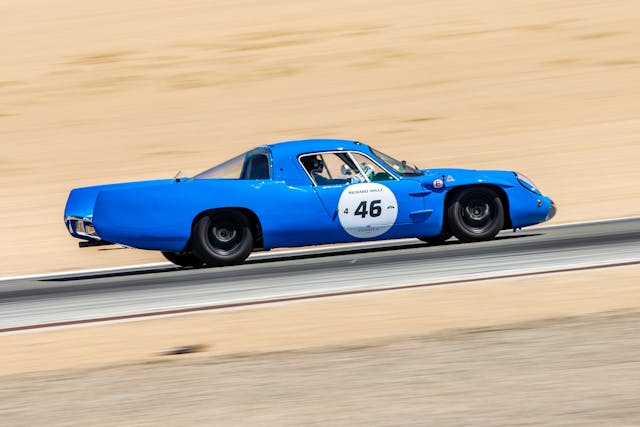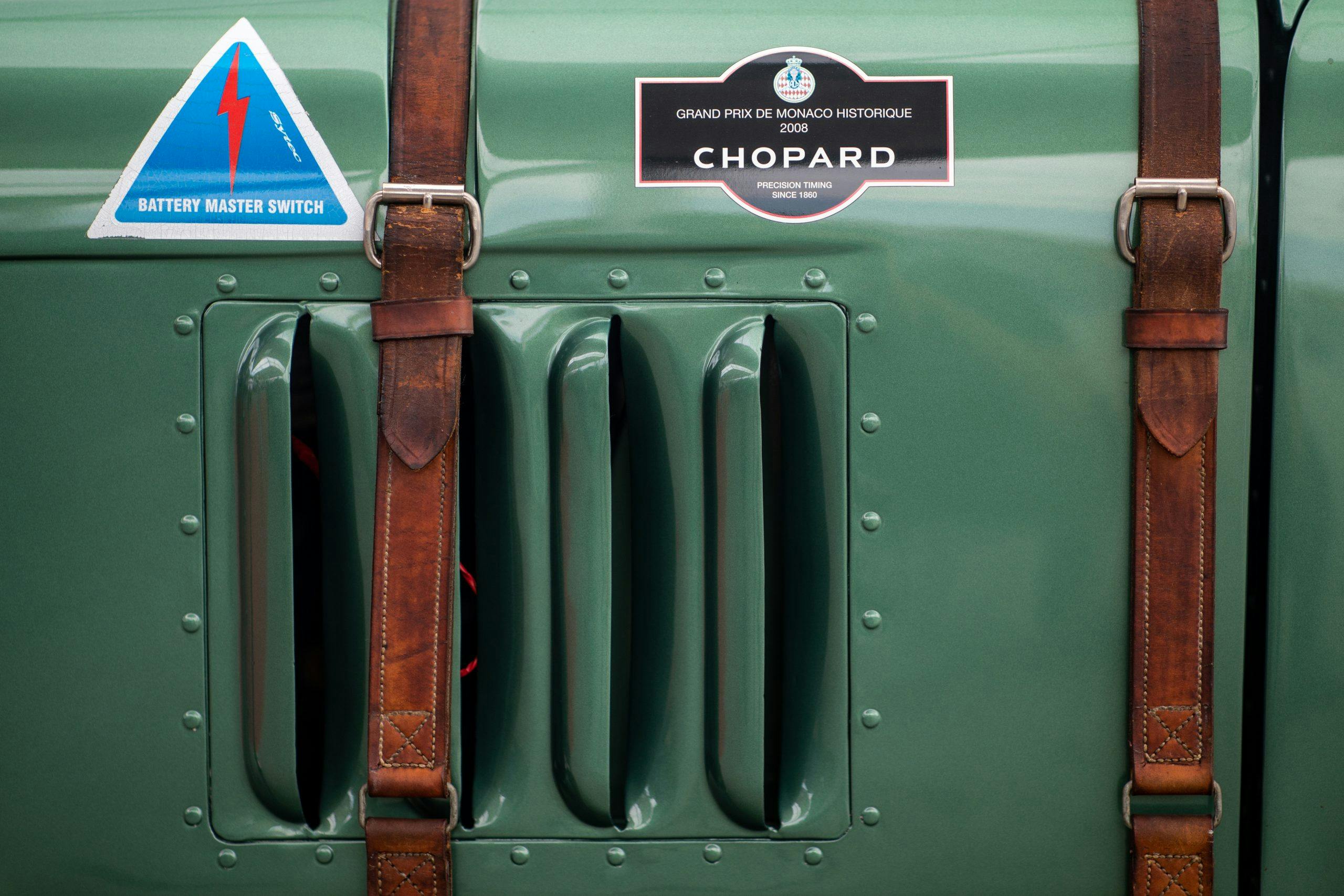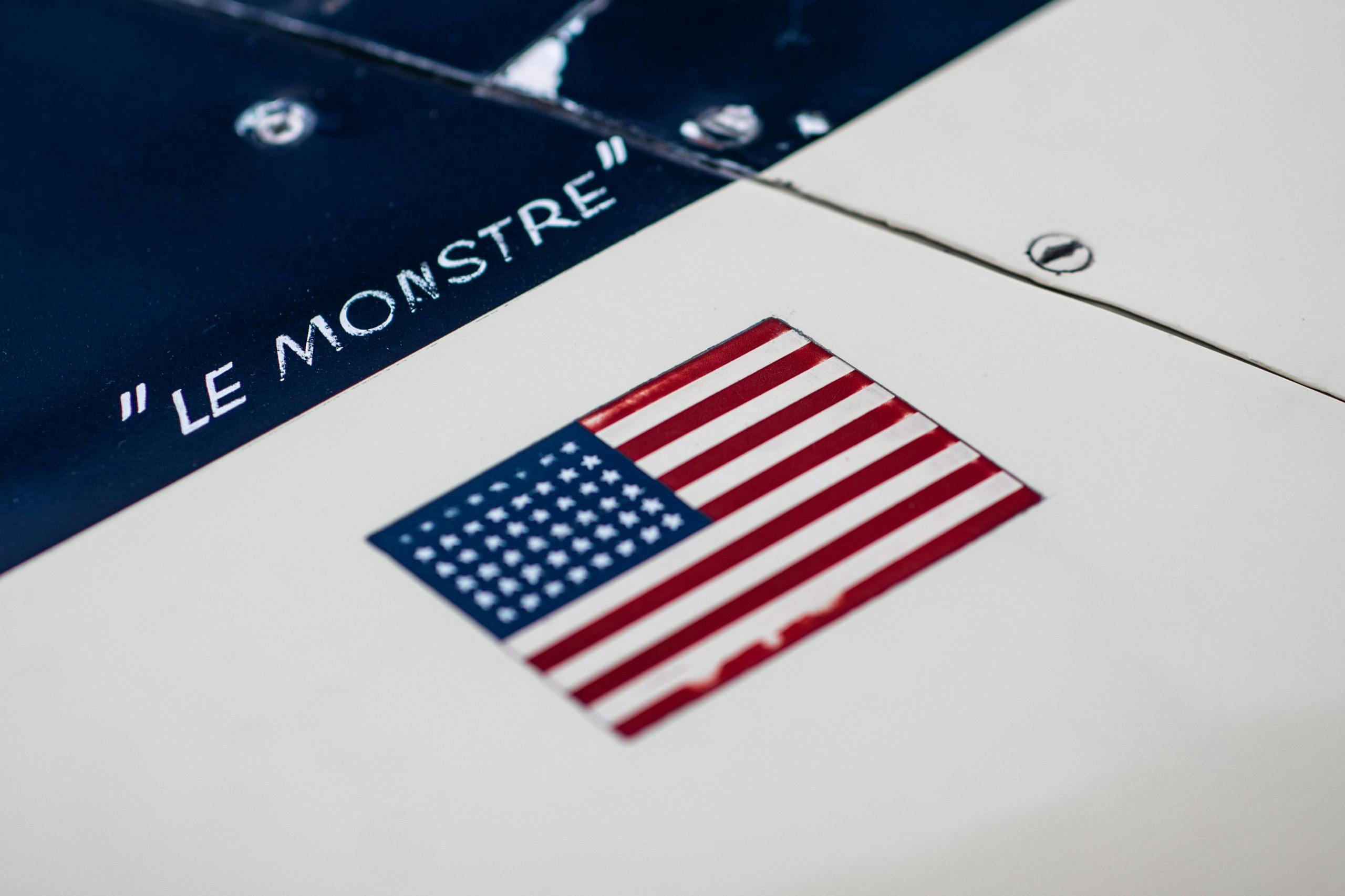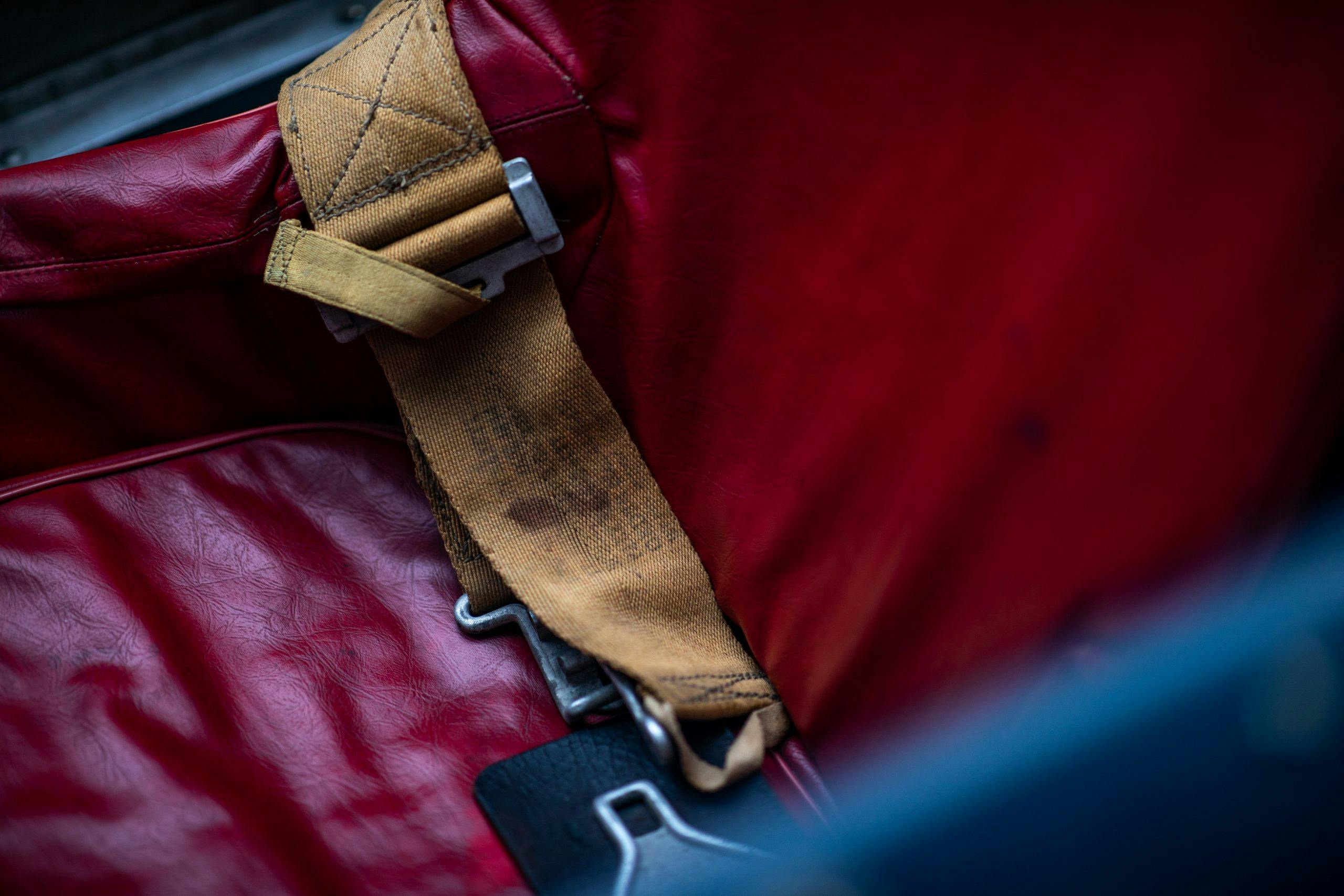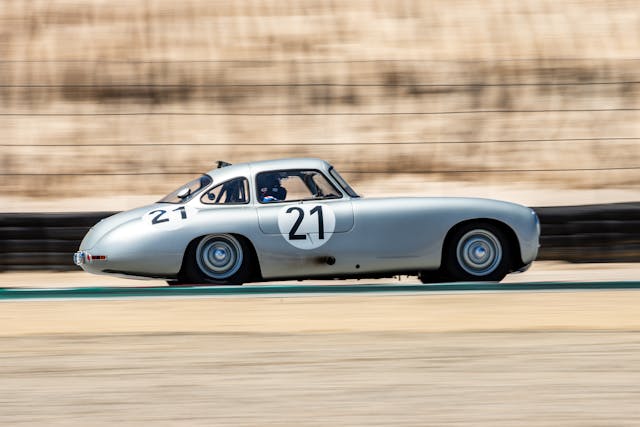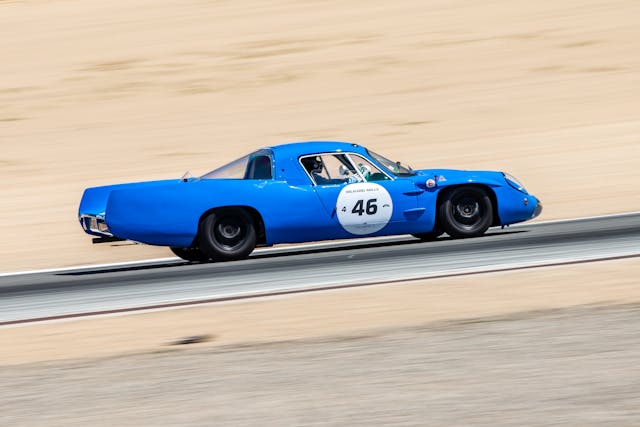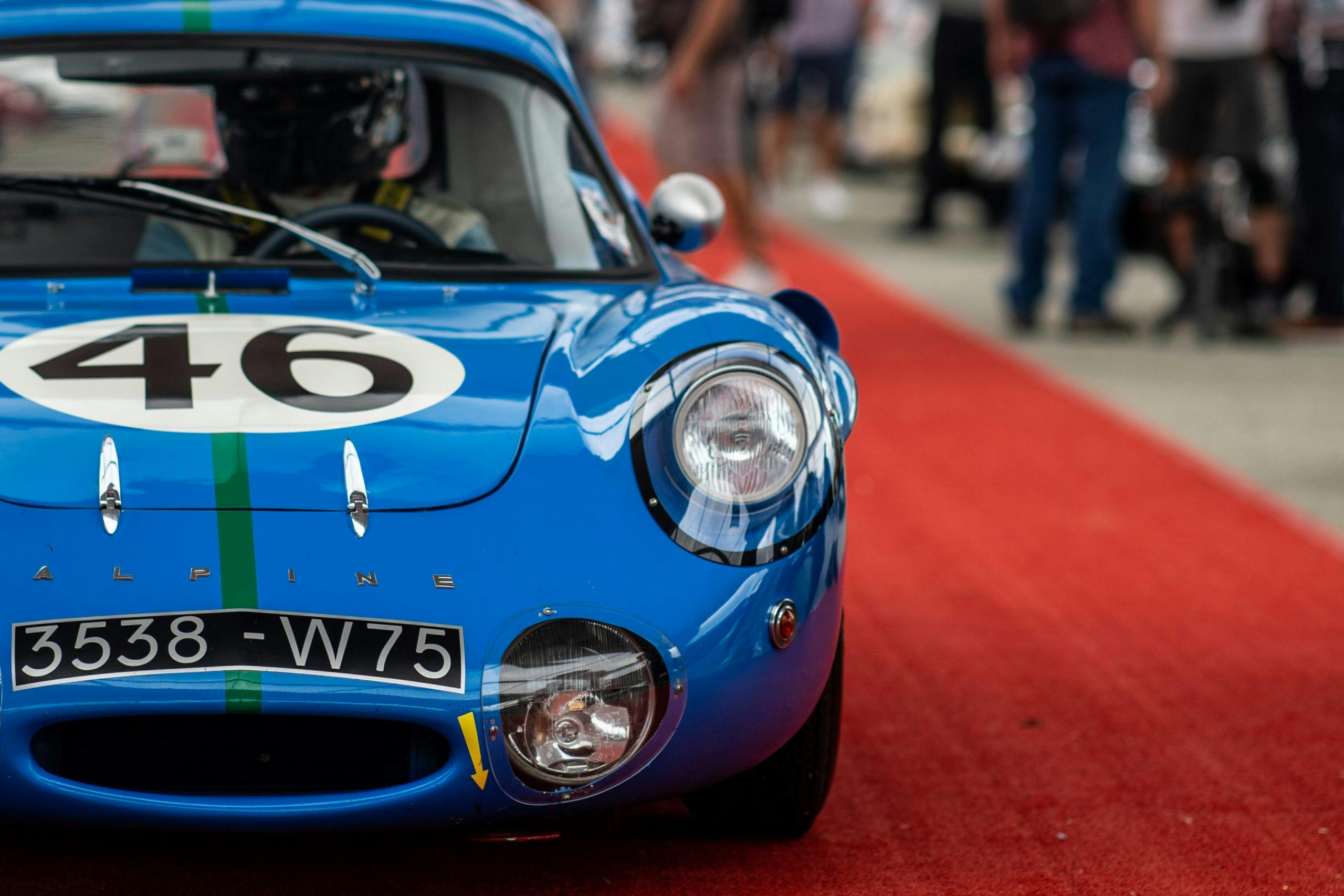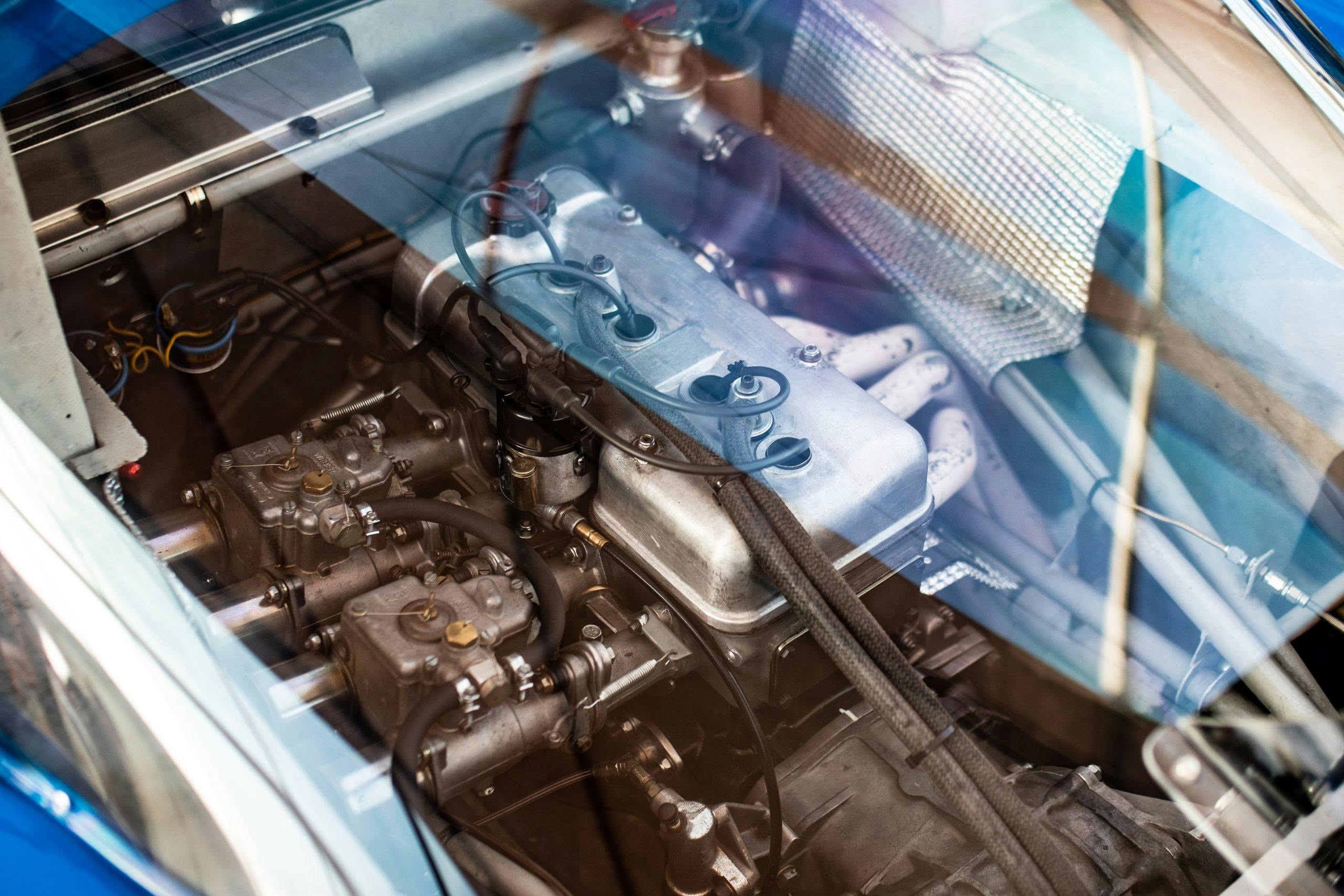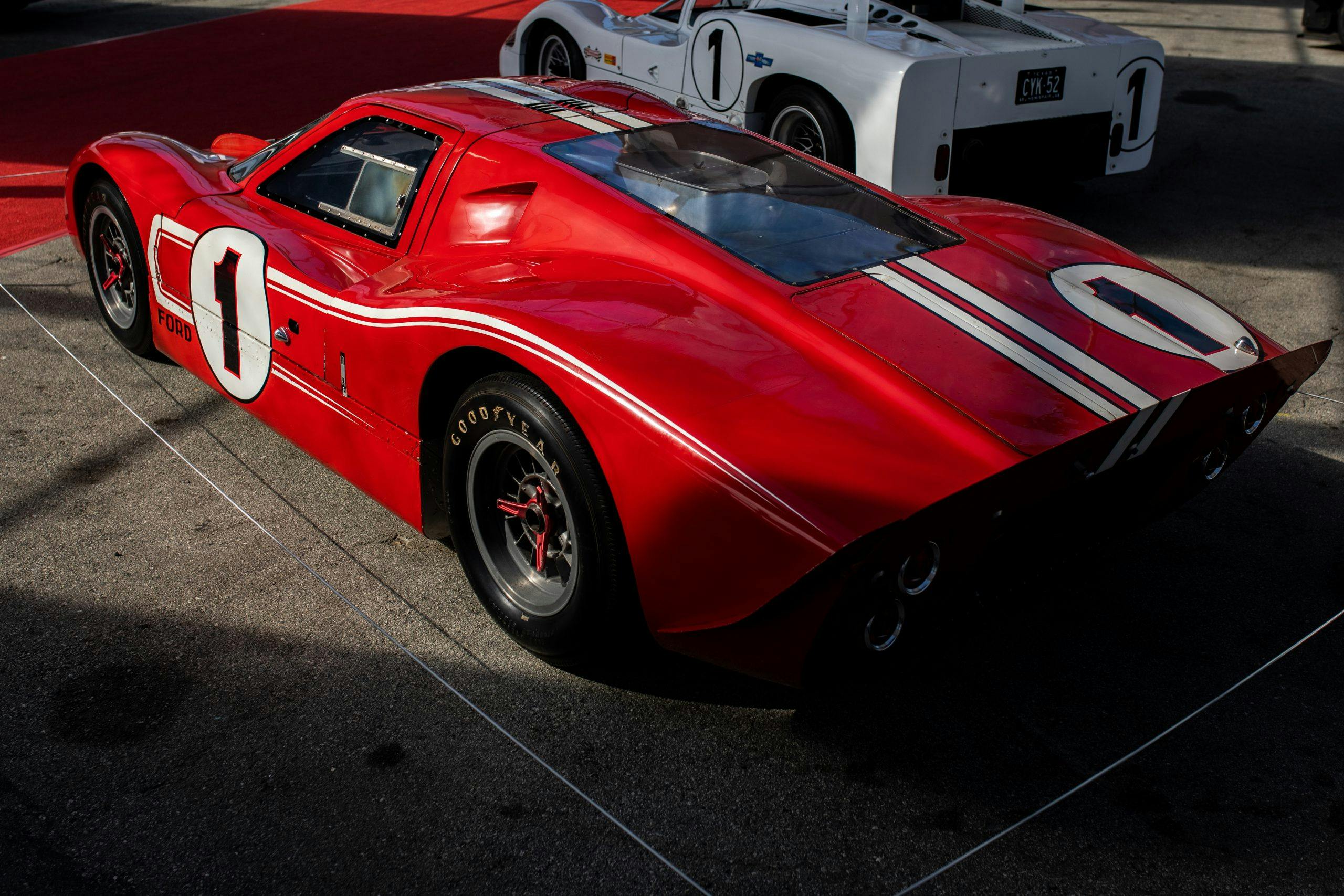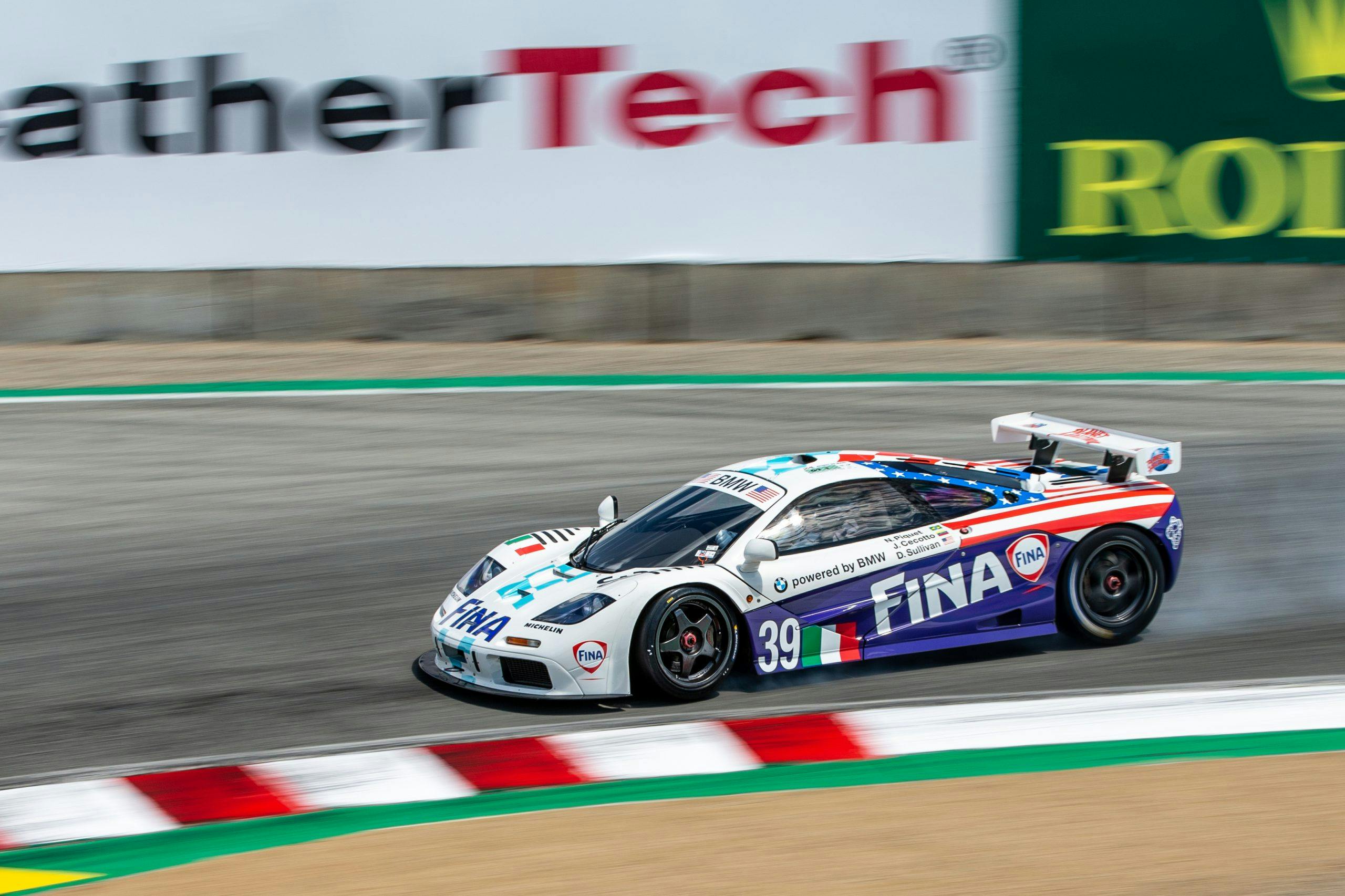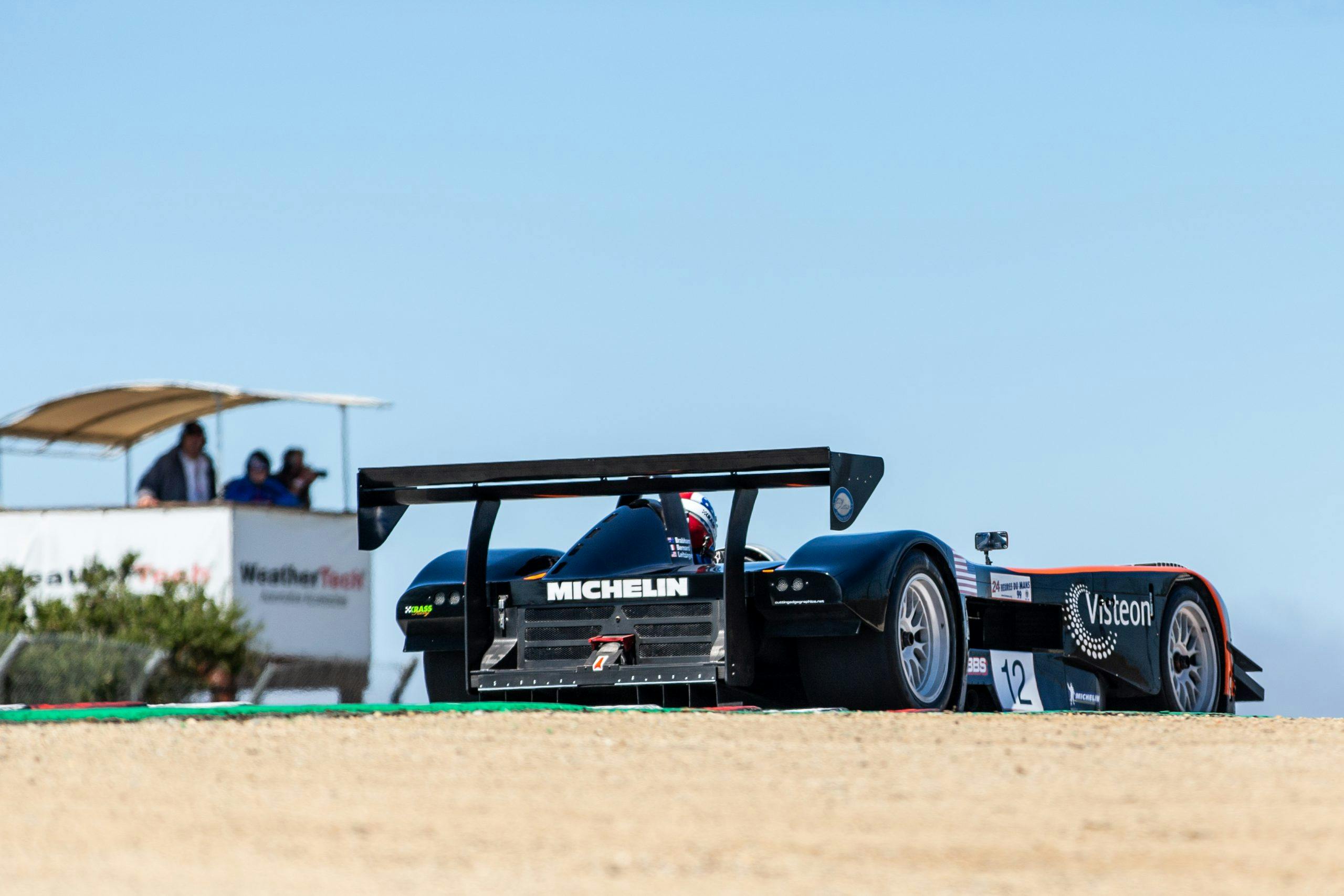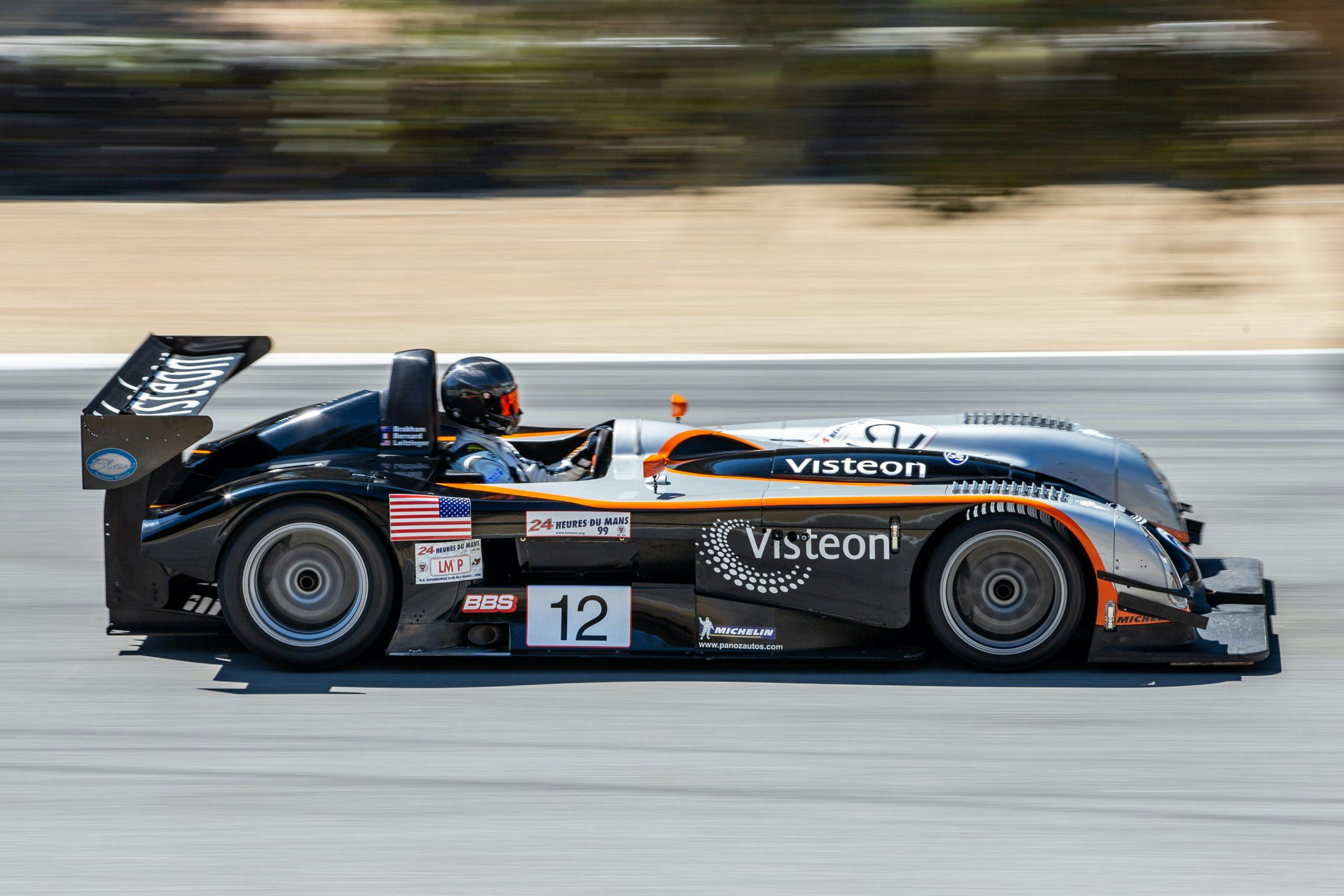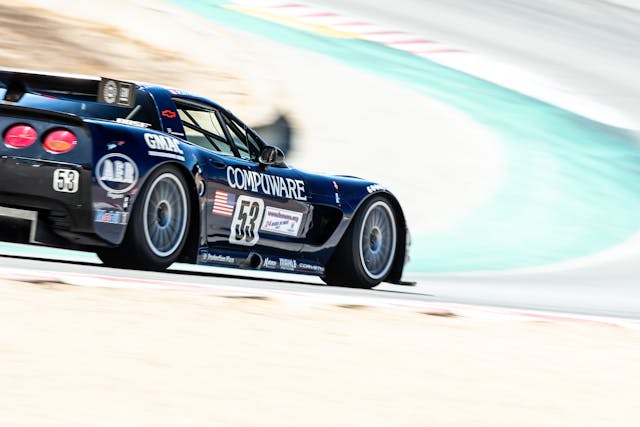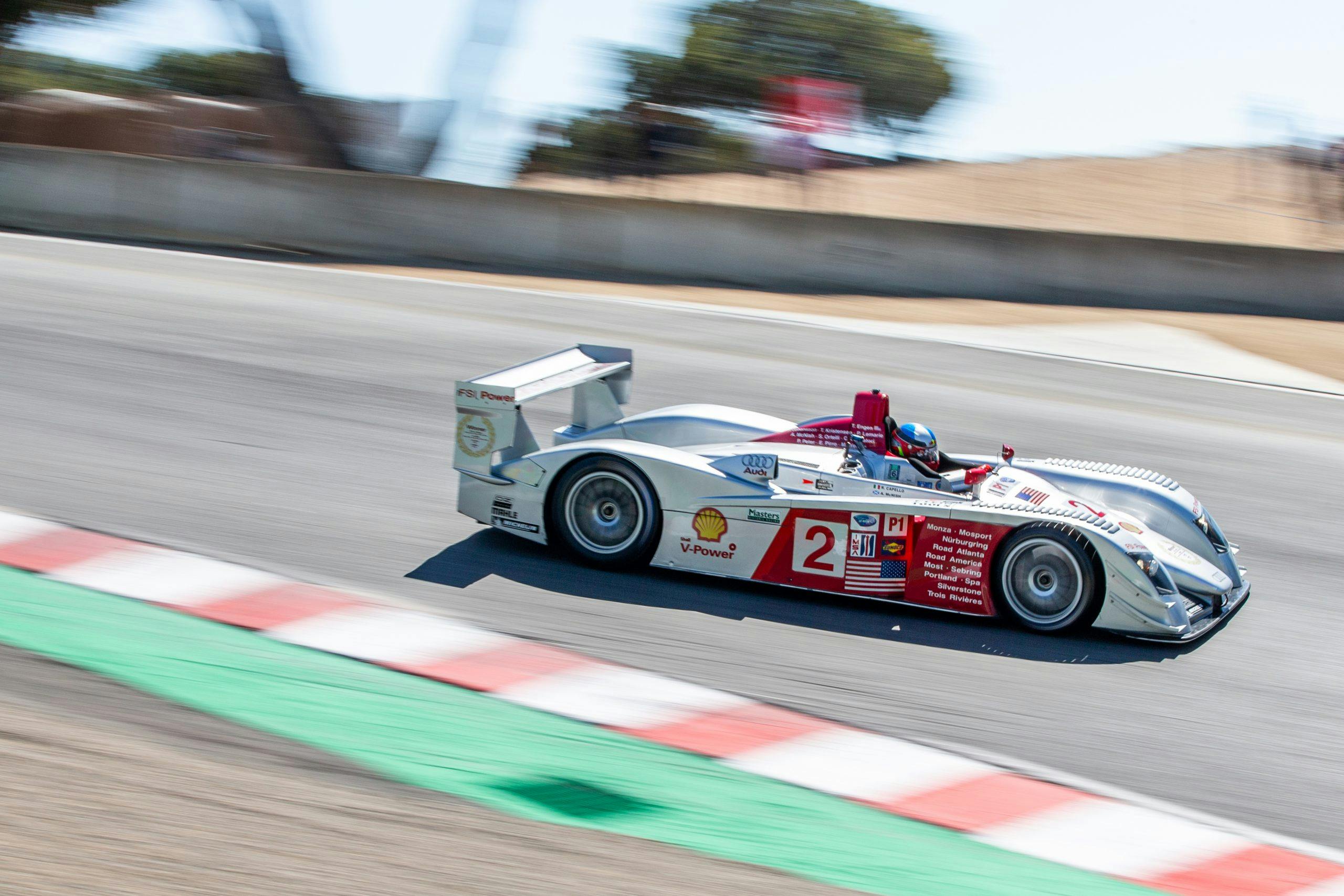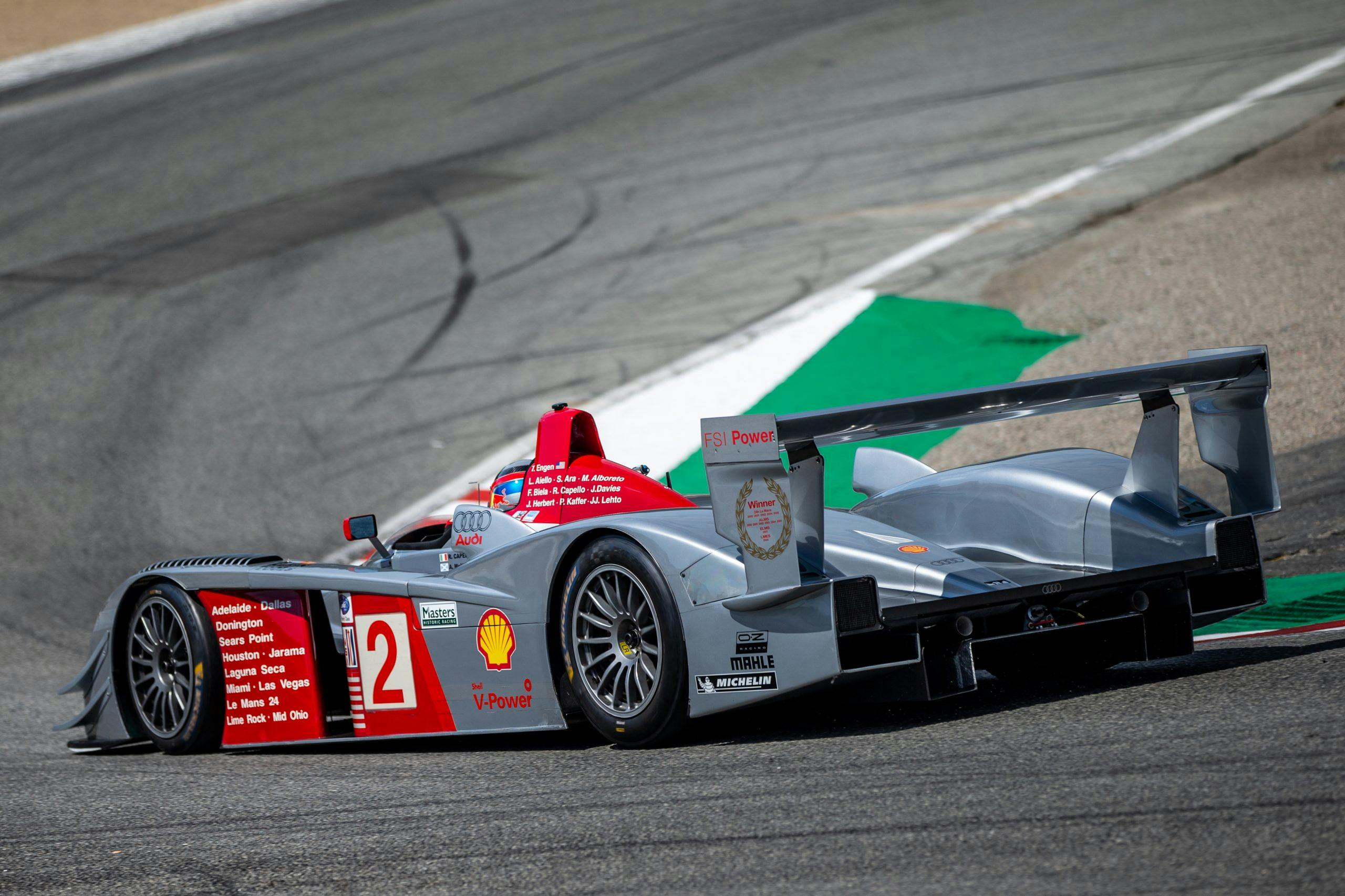Media | Articles
12 Mulsanne-eaters from Rolex Reunion’s Le Mans celebration
This year, the Rolex Monterey Motorsports Reunion featured cars and stars from the 24 Hours of Le Mans. In celebration of the French endurance race’s 100th year, the paddock at WeatherTech Laguna Seca was packed with the most iconic cars to ever rip around Circuit de la Sarthe, divided into four run groups. Organizers even staged a Le Mans running start for the “1972–1982 Le Mans” group. The gathering also showcased what was, according to the Reunion, “the largest exhibition of winning or historically significant Le Mans cars ever assembled,” parked cheek-to-jowl under a large tent in the infield—replete with armed security guarding the (inter)national treasures.
Indeed, the pedigree and the volume were jaw-dropping. Eclectic, too. Even after four days at the track, you never quite grew accustomed to the neck-snapping scenes—a Gulf-liveried 917 rolling through the crowd, the Le Mans–winning 1967 Ford GT40 Mark IV basking in a wash of California sun, or the four-rotor roar of a Mazda 787 signaling the commencement of the day’s activities. Among the cars that traded the three-mile blast down the Mulsanne Straight for a two-story drop down The Corkscrew, there was something for everyone.
We highlighted a dozen of our favorites, making sure to not duplicate marques so that we may give a flavor of the diversity within Laguna’s pits. Did your all-time favorite Le Mans racer make the cut?
1949 Aston Martin DB2
Following WWII, English businessman David Brown purchased Aston Martin—which was, at the time, nothing more than a low-volume sports car manufacturer. Brown also bought coach-built luxury marque Lagonda and installed its Bentley-designed 2.6-liter inline-six in Aston Martin’s newest model, the DB2.
Riding on a shortened DB1 chassis, this Frank Feeley–designed coupe was the first car to be fitted with a Lagonda six, in an effort to win at 1949’s 24 Hours of Le Mans. The car was one of three entered by Aston Martin, but the only DB2 to utilize the novel engine, which produced 166 horsepower. Mechanical gremlins struck the new combo early, as a broken water pump forced the DB2 to retire after only an hour of competition. Despite the early retirement, the new coupe would prove to have lasting effects on the English marque, in style and in performance.
Marketplace
Buy and sell classics with confidence
1950 Cadillac Series 61 “Le Monstre”
American gentleman racer Briggs Cunningham brought two Series 61 Cadillacs to Le Mans in 1950. In a high-speed A-B test, Cunningham kept one relatively stock and commissioned fabricators from Grumman aircraft to transform the second into a streamlined prototype that, upon completion, resembled an alien pontoon. Despite the wild looks, the boat-shaped Cadillac prototype retained most of the Series 61 running gear, including the 331-cubic-inch V-8, under its lumpy skin.
While in France, it was dubbed “Le Monstre” for its imposing proportions amongst Europe’s petite sports cars, and (according to legend) Le Mans officials spent hours crawling around the car to certify that it was, indeed, a Cadillac. Three inches narrower, and some 13 mph faster than its Series 61 counterpart, Le Monstre finished 11th in the French endurance race, ironically one spot behind the other Caddy.
1952 Mercedes Benz W194 300 SL
By the ’50s, Mercedes Benz had won every race that mattered—except one. A conquest at Le Mans was noticeably absent from its mantle. That all changed in the summer of ’52, when the German manufacturer entered three 300 SLs into the French endurance race and emerged victorious, capturing the top two steps on the podium. To differentiate the three silver beasts, each car sported a different color around its grille. With blue on its nose, the Series 194 belonging to Hermann Lang and Fritz Riess stormed across the line first, at the conclusion of 24 hours.
1958 Ferrari 250 TR
Arguably the most beautiful car to compete at Le Mans, this Ferrari 250 TR is one of 19 pontoon-bodied, V-12-powered Ferraris. Purchased new from Maranello by Jaroslov Juhan, this 250 TR was painted blue (!) and raced at Le Mans in 1958. After 72 circuits, the roadster was involved in an accident and rendered unable to finish.
Luckily, the Ferrari was returned to the factory where it was repaired, painted red, and shipped to Vasek Polak. Once stateside, the car was campaigned throughout the West Coast. Bad luck struck again, though, and it ended up in a tree, on fire, during a race at Laguna Seca. The car was eventually repaired and sold to David Love, who campaigned the born-again Ferrari in SCCA and then at the Reunion for 25 years straight.
1964 Alpine M64
The Index of Thermal Efficiency is bestowed to teams using calculations derived from vehicle weight, fuel consumption, and distance covered. In 1964, the honors went to this Alpine M64, which averaged 21 mpg for 292 laps (2436 miles) with aid from a 1149-cc, inline-four-cylinder sipper. The group finished first in class (17th overall).
A year later, the Alpine team returned with the same efficient bullet—wearing additional M65 cladding—in hopes of collecting more hardware. However, the second year wasn’t as kind to the home team. Sporting a new rear clip that would make Exner proud, the Alpine’s second go was cut short due to cooling problems. The fantastic, finned racer was squirreled away in storage for a decade until a Renault executive arranged its sale to a Bugatti enthusiast. After trading hands once more, the Alpine returned to the site of its original, efficient triumph 57 years later, in 2022.
1965 Iso Bizzarini A3/C Corsa
A low, V-8 growl might be the last sound you’d expect from the exhaust tips of an Italian-bodied Le Mans racer, especially one that shares the grid with other high-pitched wails and shrill buzzes. Such is the case for this Iso, which borrowed a Chevrolet 327 to shove it to a first in class in the 1965 24 Hours of Le Mans. The 400-horse, front-mid-engine coupe was designed by Giotto Bizzarrini, the same Italian fellow responsible for the Ferrari 250 GTO. Cash was tighter at Iso than at its Italian counterpart, and (according to legend) Bizzarrini drove the Iso to and from Le Mans, ultimately lacking funds for a haul. Hard to believe; then again so is the engine choice.
1967 Ford GT40
One year after Ford broke through for its first win at the 24 Hours of Le Mans, the Blue Oval returned with a brand-new car, save for the 427 engine and transmission. Four GT40 Mark IVs were entered in the 1967 race. With American icons Dan Gurney and A.J. Foyt behind the wheel, the only GT40 to avoid trouble finished a whopping 32 miles ahead of the second-place Ferrari, setting a record for race pace in the process. This was the only time chassis J-5 saw competition, as it was promptly retired and donated to The Henry Ford in 1971.
1969 Porsche 908/02 LH “Flunder” Langheck Spyder
Selecting a car to represent Porsche on this Le Mans list is difficult task. Rather than opting for the low-hanging 917, 935, or 962, we went with a more obscure choice. (Also, the name is just fun to say.) Flunder Langheck translates to “flat fish long tail.” The predecessor to the world-beating 917, this was the only 908 to receive the extend-o treatment ahead of the 1970 24 Hours of Le Mans. The odd creature—propelled by an air-cooled, 3.0-liter flat-eight—crossed the finish line third overall and first in its sports prototype class.
1996 McLaren F1 GTR
According to legend, Gordon Murray never aspired to enter his F1 supercar in wheel-to-wheel racing. It was McLaren’s customer base that tipped the scales, as the firm received numerous requests for an F1 racer. After a couple serious dudes approached McLaren with the idea to race in an endurance series, an agreement was reached, and a three-car racing program was born. Since Le Mans regulations capped horsepower at 600, the race version was less powerful than the road goer, despite sharing the same BMW-sourced 6.1-liter V-12. In its first race at Le Mans, the F1 GTR shocked the world and took first overall. One year later, the mighty Mac was back for more, with seven entrants, including this FINA-liveried Team Bigazzi entry that finished eighth overall.
1999 Panoz LMP Roadster
After the FIA discontinued the GT1 class, which included the aforementioned McLaren F1 GTR, Panoz opted to transform its fleet into Le Mans Prototype (LMP) spec and compete in the Euro Le Mans and American Le Mans series. Underneath its big schnoz, Panoz fit a 6-liter 625-horsepower Ford by Elan Power. In its first 24 Hours of Le Mans as an LMP racer, the Panoz finished seventh overall. Stateside, the car experienced success, capturing the Petit Le Mans on the road to the 1999 ALMS team—and manufacturer—championship.
2003 Chevrolet Corvette C5.R
As part of the fleet that secured Corvette Racing its 2003 manufacturer’s championship, this C5R finished third in class and 12th overall at that year’s French contest. But it didn’t slip into retirement quietly after the victorious season. Instead, it was crashed by Dale Earnhardt Jr ahead of a race at Sonoma Raceway.
Years later, the NASCAR driver revealed on his podcast that he thought he was pulled from the fiery wreckage before his trip to the hospital: “… Somebody pulled me out of that car. And I thought that it was a corner worker because I felt somebody put their hands under my armpits and pull me out of the car. I didn’t get out. I don’t have any memory of myself climbing out of the car.” He went on: “…When I got to the hospital, I was like, ‘Who pulled me out of the car? I gotta say thanks to this person,’ because it was a hand! It was physical hands grabbing me! I felt it. And there was nobody there.”
Since the accident, the car has been restored by Pratt & Miller to its original form, resplendent in the livery in which it ran at Le Mans in 2003.
2005 Audi R8 LMP1
Aboard this Audi, Tom Kristensen won the 2005 24 Hours of Le Mans and became the all-time most successful driver in the French endurance race, surpassing Jackie Ickx’s six career overall wins. The victory was also Audi’s fifth triumph in the race. 2005 also marked the final year for the R8 LMP racer, as the diesel-powered R10 TDI swooped in the following year to continue Audi’s dominance in endurance racing.
2012 DeltaWing
We saved the wildest for last. Designed by Ben Bowlby and constructed by Dan Gurney’s All American Racers, the DeltaWing was entered in the 2012 24 Hours of Le Mans under the Garage 56 banner. This entry slot is reserved for experimental cars, and the rocket-shaped roadster was just that, featuring front tires just four inches wide, and a cockpit just in front of the rear axle. Approximately half the weight and half the power of the prototypes it ran again, the DeltaWing utilized a 1.6-liter turbocharged engine to shove it around Circuit de la Sarthe. Sadly, the 1,047-pound experiment was involved in a wreck on lap 75 and did not finish. The DeltaWing would undergo several iterations in the following years, before retiring for good in 2016.
Check out the Hagerty Media homepage so you don’t miss a single story, or better yet, bookmark it.
